 |
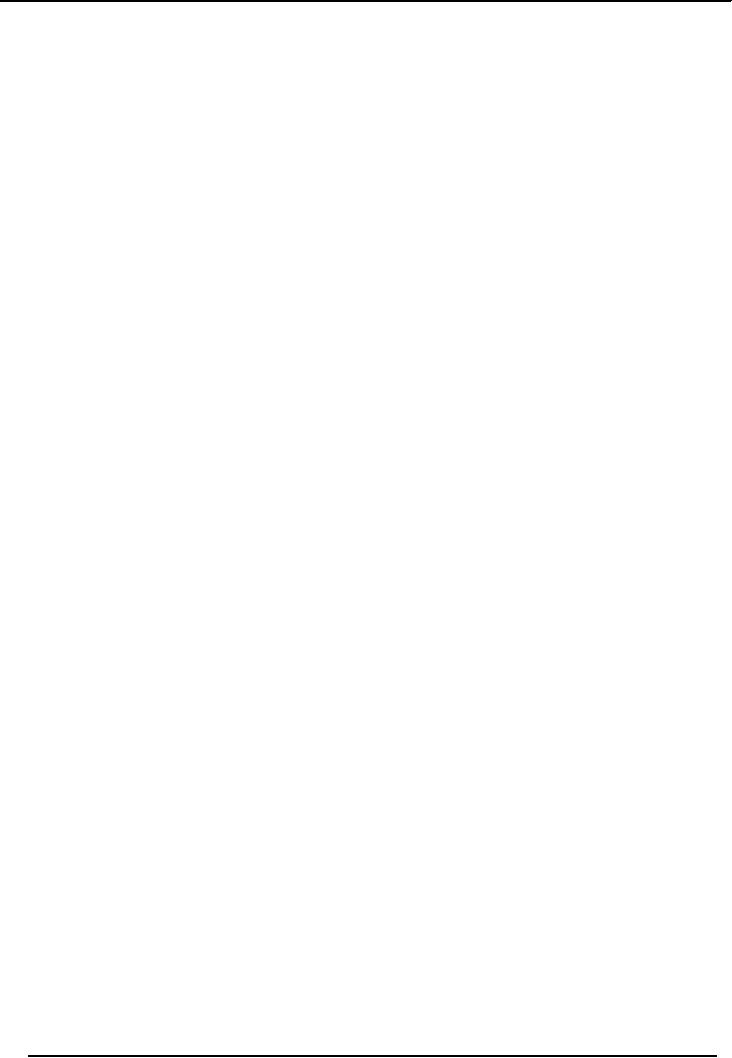
Feature
and Column Writing MCM 514
VU
LESSON
06
CONDUCTING
AND WRITING OF INTERVIEWS
Interview is
an important aspect for
feature writing. Newspaper and
magazine features interviews
are
similar.
The only important
difference is that the typical
newspaper feature interview
may be somewhat
less
thorough because the newspaper
writer frequently faces an
imminent deadline.
Definition
According
to a loose or general definition, interview is
`Asking questions to obtain
information'.
Strict
or technical definition: Asking questions
to obtain opinions, ideas, or special
information on a topic
of
interest from a prominent person or a
recognised authority.
Kinds
of interviews
Following
are the types of interviews:
Informative:
This
interview is to obtain facts
from those responsible for something, or
have witnessed an
event
or participated in a news situation;
playing up the important
facts.
Opinion:
This
is to obtain comments and opinions,
and the writer play-up
comments
Personality-based:
This is done for a celebrity or
well-known person to obtain
facts of personality,
his
interests,
life and activities. However,
talking to the less known is a
different case
scenario.
Kinds
of interviews (availability
of the interviewee)
It
depends upon the availability of the
interviewee, which makes the
following kinds of
interviews:
In-person
interviews
Interviews
for newspapers or magazines
can be conducted in person, by telephone,
email, in a group or by
letter.
Each category of interview
has a unique purpose, as
well as distinct advantages and
disadvantages.
For
example, the skilfully conducted personal
interview--the cornerstone of the story--should
yield good
quotations,
accurate description and insight
into the issues and individuals in the
story.
The
disadvantage of the personal interview is that it
takes time--time to arrange, time to
gain the
confidence
of the subject, time to get the necessary
information and time to disengage
from the interview.
Telephonic
interviews
If
the personal interview is like a full
meal, the telephone interview is a
fast-food sandwich because it
serves
a purpose, but in a minimal
way.
The
advantage of the telephone interview,
usually used for a story's
secondary figures or for
re-interviews
of
primary subjects, is its quickness,
like fast food.
One
disadvantage of using the telephone is
that you cannot see the
interviewee, which means you
can't
describe
him or her. The main
disadvantage is that you cannot establish
much rapport with the
interviewee
because of the impersonality of the
telephone. To mitigate this disadvantage,
work on your
telephone
manners and also provide
verbal reinforcement for
interviews, such as an occasional
"Uh-huh"
or
"I understand.".
Group
session
The
third category of interview is the
group session, often with a
subject whose spouse or friend
is
present.
A variation is an interview with a
company employee in the presence of one
or more corporate
public
relations representatives.
The
only advantage to the group interview is
that it's better than no
interview at all. Its
disadvantages are
that
everyone in the room may
want to answer your
question, or--in the case of a PR
representative
overseeing
the interview--the subject's answers may
be tainted.
To
get the most out of a group
interview, code your
notebook so that you can
ascertain who said what,
or
use
a tape recorder. Also, make
arrangements to contact the prime
interviewee later by telephone
for
additional
comments.
26
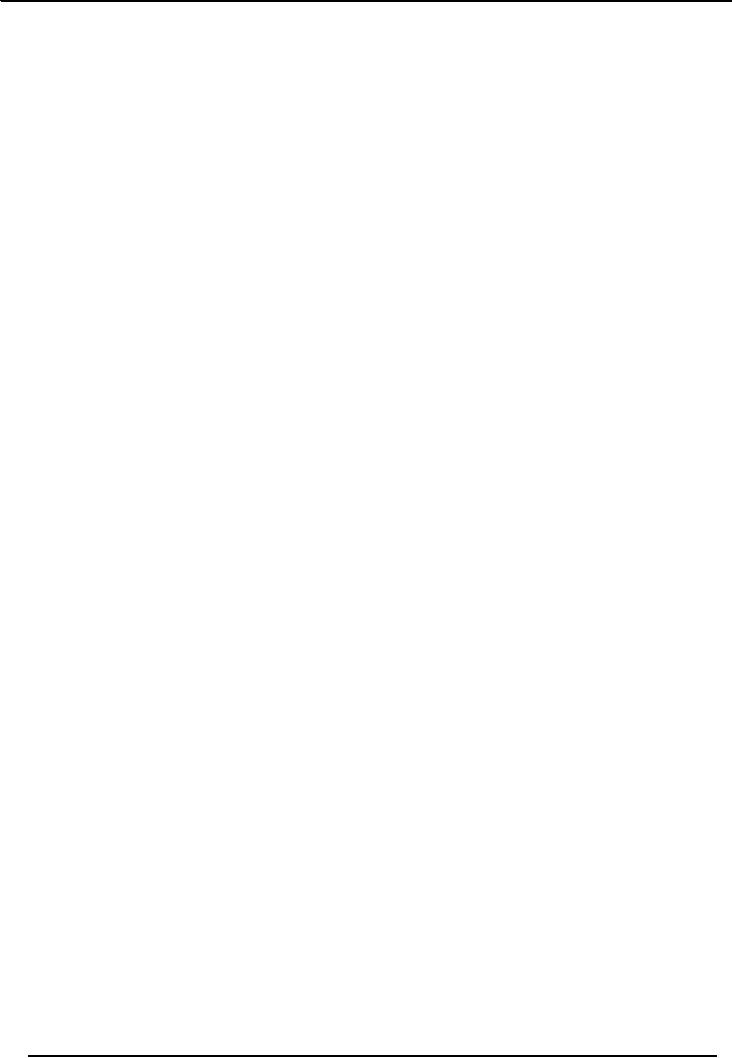
Feature
and Column Writing MCM 514
VU
Email/letter
Occasionally
a writer is unable to reach a
source in person or by telephone. In
that case, a written list
of
questions
is an alternative to no interview at all.
For example, if you
repeatedly fail to reach a
key
executive
in a major corporation, try
submitting written questions. The
executive may respond by
email
or
letter, and may even telephone
you, thus upgrading the
quality of the interview.
The
advantage to the written interview is
that, like the group
interview, it's better than
nothing. Its
disadvantages
are numerous: You can't establish rapport
with the subject; your source
has ample
opportunity
to ignore or to be unresponsive to your questions;
you have no opportunity for
clarification or
elaboration;
and what you cannot see you
cannot describe.
Who
to interview
All
ideas for interviews begin
with a question: Who will be
interviewed?
That
sounds like an easy
question, but the answer
often can be elusive. For
example, assume you're
a
newspaper
feature writer and you want
to write an odd-occupation story
about a so far
unselected
professor
at the university because you have
learnt that more than half
of the university professors
supplement
their income with outside
activities. These activities range
from consulting in their
field to
operating
businesses.
You
call the university's media liaison
office and ask for help.
The media representative provides
you
with
three names: A broadcasting professor has a
half-interest in a radio station; a
business teacher does
consulting
for companies; and an English professor
writes paperback romance
novels.
Then
the media liaison recalls that an
education professor has recently
quit his tenured post to buy
and has
started
irrigating his land. With
that, you've found your
main who
and,
in the process, refocused
your
story,
which will now be about
university teachers, who
leave teaching.
Your
interviewee list isn't complete, of
course. You'll need to talk
to that teacher's former
department
chairperson
and a few colleagues and students. For
perspective, you'll need other
examples of professors
from
the colleges, who have junked their
teaching careers. And you'll
need to find at least one
expert who
can
explain why professors leave
teaching.
(If
you were freelancing this to a
national general-interest magazine, you
could still focus on the
professor,
but you probably would
need to draw your other
examples from universities
across the country
to
give the story national
scope.)
As
you can see, the focus of
your story should lead
you to a key "who." But the
right "who" also
can
change
the focus of the story. Finally, except
for the most superficial
newspaper features, your
"who"
really
should be a list rather than a
single name.
Asking
for the interview
The
next step is to ask for the
interview. Getting an interview is
sometimes difficult because
many people
are
wary of the press. For
example, first-time interviewees
may picture themselves
confronted with
questions
such as, "Do you
still beat your
wife?"
The
best way to ask for
interview time is to explain
quickly and clearly, who you
are, why you want
the
interview
and how much time
you will need. Ask
for enough time to complete the
interview, but allow
more
time in your schedule in
case the interview goes
beyond the allotted
period.
You
may also have to explain to the
interviewee how the story
you want to write differs
from
investigative
reporting and what the interview
will be like.
Remember
that no one (except perhaps government
employees responding to questions about
their work)
owes
you an interview. Everyone
else who agrees to talk to
you is performing a courtesy. To be
sure,
giving
you an interview is not an
act of pure altruism. The
interviewee can benefit from
the experience in
numerous
ways, including recognition and the
excitement of a new experience.
Many
newspaper and magazine writers
agree that asking for the
interview is worrisome.
If
you are writing an in-depth
profile and have the time, consider the
advice of writer Gael
Greene.
Greene
says: "In a profile, the ideal
way for me to interview is
practically to live with the
person for two
or
three days, if possible. I have a list of questions
and I have done as much research as I
can, have talked
to
all their friends and
ex-lovers and mates and so on.
It's productive just to move
in and sit there until
27
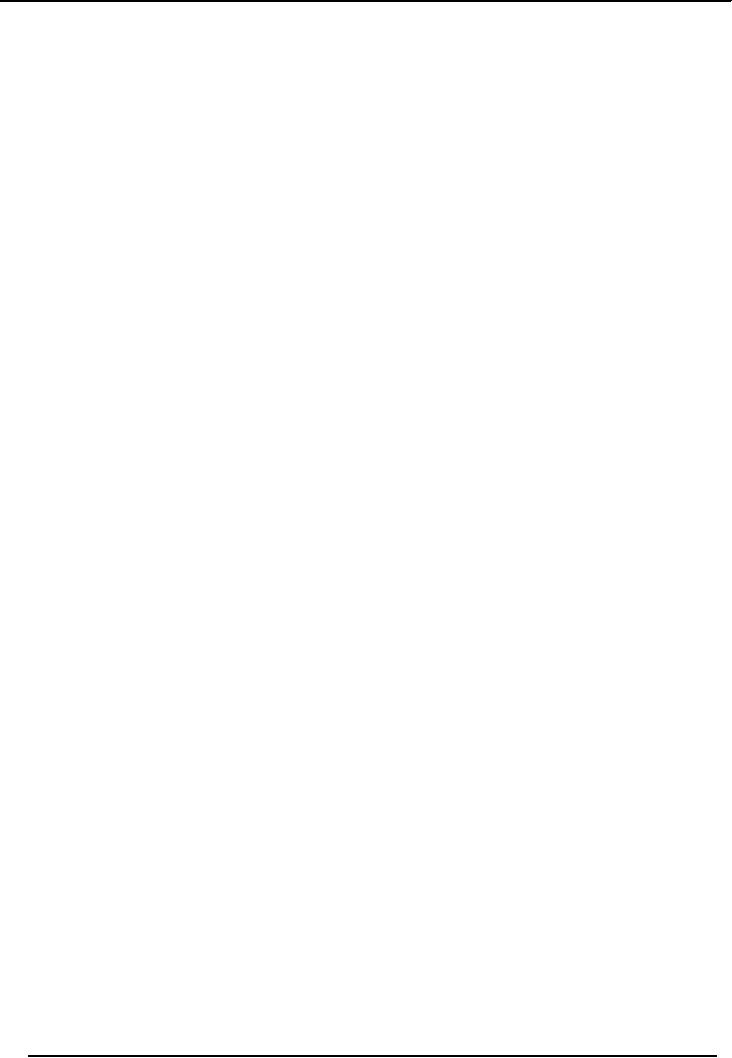
Feature
and Column Writing MCM 514
VU
they
stop being aware of my
presence and are just
being themselves. Then at
some point, at lunch or
din-
ner,
I might ask a few
questions--the soft, easy questions,
and let them say the things
they want to say."
In
short, use common sense. If you're
interviewing an executive who
can tell his secretary to
hold his
calls,
the office probably is a good place
for the session. On the other hand, if
you were interviewing a
factory
worker, the workplace would be a
poor location because it
wouldn't be private or quiet.
Instead,
meet
the person at home, assuming you
can have a private discussion
there.
Keep
following brief points in
your mind always:
�
Making
an appointment in advance
�
Arrange
a time and place that are
convenient, importantly for the
interviewee and then the
interviewer
�
Use
ingenuity and perseverance to obtain an
interview if you fail to
make an appointment
�
Do
not use unethical or devious
means to obtain an
interview
�
Make
appointments sufficiently in advance as
people might be very
busy
�
Keep
in unforeseen circumstances might
make you miss it
�
Repeat
time and place of appointment before
hanging up the receiver--certain that
there is no
misunderstanding
Researching
the interviewee
When
you're granted the interview, you'll
need to research both the
interviewee and the topic of
the
interview.
Your
library research should be supplemented
with calls to people who
know your interviewee
and
understand
the topic of your article.
Prepare your interviewee for
this by telling him what
you're going to
do
and--if the story is personal--by
asking the interview for the
names of two or three close
friends.
Talk
to your seniors and colleagues as
well.
You
should ask for a curriculum
vitae,
which
is an academic resume`. If your subject
works for a large
company,
the company public relations office
might provide you with a
biography, but they are
not
required
to do so.
With
these sources, you should be
able to piece together lots of
information before you even
talk. You'll
discover
information such as his full
name, age, address, academic
degrees and title,
previous
employment
record, and other information.
The
point of all this is that if
you enter an interview armed
with detailed information
about your
interviewee,
you'll be able to spend the
interview time more effectively and
you'll also be likely to
flatter
the
subject with your thoroughness.
Conducting
the interview
Effective
interviewing--the practice of getting another
person to talk freely--is
largely an exercise in
human
relations. To be successful at it,
you must be part used-car
salesman, part psychiatrist and
part a
secret
agency man. You'll use some
of this human relations skill in
asking for the interview and
in
conducting
research. But most of that
effort should be directed
toward the interview
itself--particularly
the
first few minutes of the
session.
Professional
writers say the secret to an
effective interview is to make friends,
and the sooner the better.
Research
has shown that the first
four minutes of an interview sets the
tone for the rest of the
meeting,
which
means that you have about
240 seconds to establish a working
relationship with the subject, or
be
left
with an interviewee who may
be unconcerned about your needs,
unwilling to help and perhaps
even
hostile
to your presence.
The
interviewee will be sizing
you up during those first
four minutes, researchers say. For
that reason,
you
need to be aware of your
appearance, body language, voice, and
word choice.
Let's
take appearance
first;
which experts say makes up
about half of the first
impressions. Dress
appropriately.
If you were interviewing a bank president
in his office, blue jeans
would be inappropriate
attire.
On the other hand, if you're interviewing
a factory worker in a blue-collar
tavern, a business
suit
won't
help your cause. And if
you are interviewing a
religious figure, you need
to wear a dress
accordingly.
28
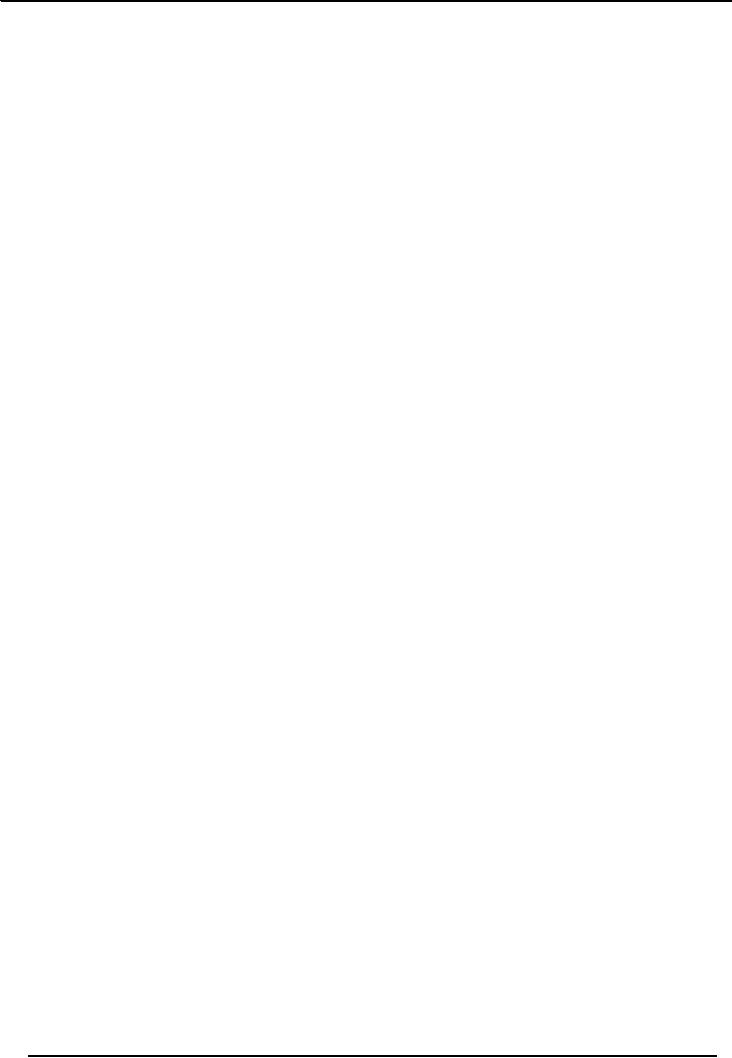
Feature
and Column Writing MCM 514
VU
Watch
body language.
Head
nodding is friendly and reinforcing. A
blank stare may be
threatening. A slouch says you
are lazy.
Erect
posture says you're
alert.
Voice
and word choice count for the
other half of the impression, experts say. If
you're used to
speaking
loudly,
soften your voice in an intimate
office setting--or expect the interviewee
to try to get rid of you
at
the
earliest opportunity. If you mispronounce a
word or use poor grammar, the
interviewee has every
reason
to suspect you're likely to misquote
him or her in the article.
In
short, the interviewee is deciding
whether he or she likes what
you look like and how
you speak at the
same
time that he or she is
sizing up what you're saying
and how you're saying
it.
Six
simple techniques will help
people like you--assuming
you haven't shot yourself in
the foot with
inappropriate
attire and elocution. First, be
interested in your subject. Second,
smile, while you talk
and
listen.
Third, use the interviewee's
name correctly. Fourth, be a
good listener. Fifth, talk
in terms of the
other
person's interests and with the other
person's terminology. Finally, make the
interviewee feel as
though
he or she is the most important
person in the world by paying
close attention while you're
with
him
or her.
Brief
points
�
Be
sure what your assignment is
and what will you
do
�
Select
aspects that will interest
your reader
�
Select
a definite and limited topic
which could be developed
adequately in a limited
time
�
Learn
about the person as much as possible,
his accomplishments, opinions, likes,
dislikes,
personality
�
From
persons around you, from
articles, books, either
written by him or others
about him
�
Learn
about the subject
�
Gather
enough information to speak
intelligently on the topic
�
Prepare
a questionnaire, must be
thought-provoking and current
�
Questions
in chronological order
�
Questions
of local interest
�
Avoid
embarrassing or personal questions, but
not difficult ones
�
Questions
to bring out desired
information
Asking
questions
Think
about your questions before
you ask them. Most newspaper
and magazine writers -- even
professionals
of long standing -- jot down
their questions beforehand. Of
course, you should be
flexible
about
those questions. If you have 99 good
questions but `the subject says something
stunning in the
middle
of the third answer, be prepared to follow
that lead and spontaneously
create new questions
pursuing
the new angle.
As
you phrase the questions--whether in
your mind or on paper--scrutinise
how you ask each
one
because
questions come in a variety of styles,
each with its own
effect. Here are four
useful types of
questions.
The
open-ended
question allows the
respondent broad range in the answer. If the question is
unfocused,
the
answer is useless. Let's
assume you're interviewing
students at the University for a
Newspaper
Feature.
Here's an unfocused open-ended question
you might--but
shouldn't--ask.
Example:
"What's your opinion of the
university?"
Opinion
of what? The interviewee
will think. The bookstore?
Dormitory conditions? Cafeteria
food?
Academic
quality? Here is a more
focused and useful version of the
open-ended question.
Example:
"How do you think the
university's advising system
can be improved?"
The
closed
question asks
for a more narrow
reply.
Example:
"Which academic departments at the
university have you heard positive
things about?"
Example:
"Which professors teaching general
education courses would you
recommend to a freshman
entering
the university?"
29
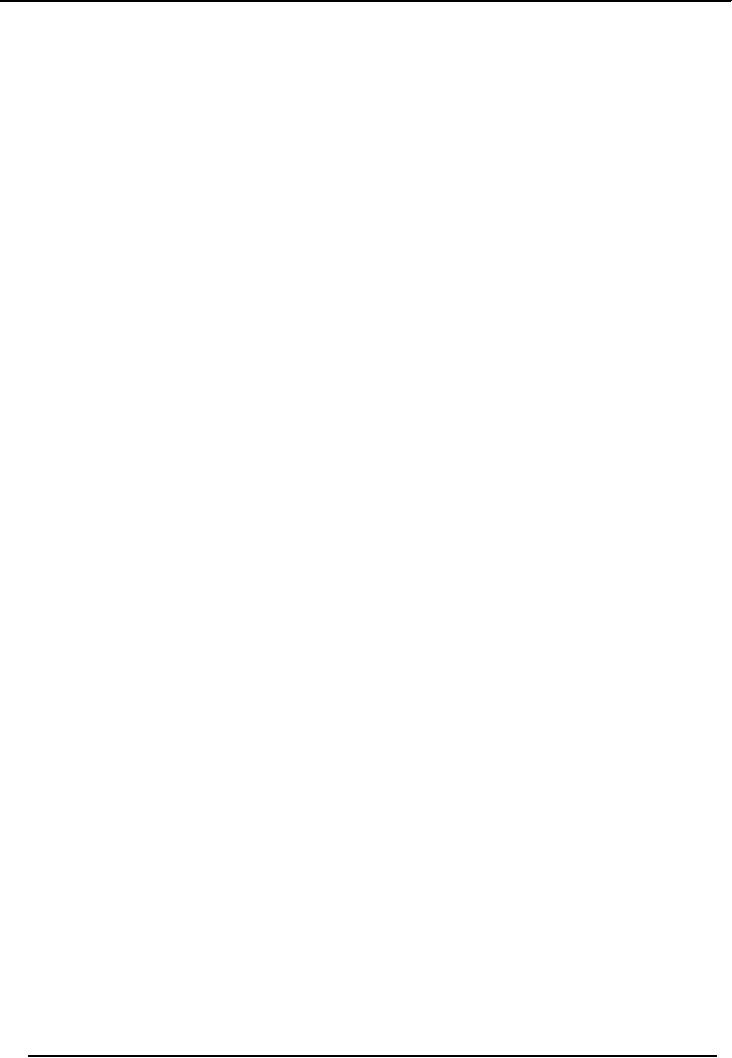
Feature
and Column Writing MCM 514
VU
The
probe
question asks
for amplification of an unresponsive or
incomplete answer.
Example:
"Why do you recommend Prof
(name) basic course?"
The
mirror
question by repeating
part of the interviewee's answer, forces
the respondent to amplify his
or
her answer and also gives
you time to finish writing
down the original answer. The
mirror question
often
is coupled with a probe
question.
In
general, the writer should use
focused open-ended, closed and probe
questions, followed by an
occasional
mirror question, to slow
down the interviewee and to clarify
quotations.
The
writer should specifically
try to avoid three question types:
yes-or-no, leading and loaded
questions.
Hypothetical
queries may sometimes be used.
Here are examples.
The
yes-or-no
question, which
allows the interviewee to answer in
only one of two ways, is
virtually
useless
for the feature or magazine
writer because it doesn't
yield a detailed answer
(unless it is followed
by
a probe question).
Example:
"Do you think Prof (name) is
a good teacher?"
The
leading
question is considered
unethical by many writers and
editors because it strongly
suggests the
"right"
answer to an interviewee.
The
loaded
question, designed
to antagonise an interviewee, is equally
manipulative.
A
final type of question that
occasionally may be used is the
hypothetical
query, which
allows the
interviewee
to think about and comment on
coming developments. You must be careful
to pose
hypothetical
questions only about situations
that are, in fact, able to
occur.
Succinctly,
you should carefully structure
your questions. And when you
structure the questions, you
should
build them along the lines of
focused open-ended, closed, probe and
mirror queries.
Most
interviews require that the
writer ask some "difficult"
questions. Difficult questions are hard
to
define.
If you're writing a profile, the
difficult question could be something
like, "How much money
do
you
make?" or "Weren't you
arrested in 1984?" Be sure to
ask these questions at the end of the
interview
so
that if the session ends
abruptly, you will still
have enough material to write
your story.
The
next step in the interview
process depends upon the
difficult question having
been asked. If you
have
asked
a touchy question, you
should be prepared to help the subject
recuperate from the trauma of
being
frank--or
angry--with you.
Your
interviewees will not
usually be criminals and you
are not a police officer,
but the act of suggesting
that
something said will not
sound as awful as the subject thinks it
will is, in fact, effective
human
relations.
It
is said that a writer's
personality will set the
tone for the
interview.
Journalistic
techniques really grow out of the
kind of person you are.
Hostile people will be
hostile
reporters
and friendly people will be
friendly reporters. An interview is a
conversation with slightly
more
questions
than ordinary.... If you are
friendly, that comes over.
If you are hostile and
paranoid, that comes
over.
For
example, investigative reporters tend to
be paranoid. An investigative reporter
once said: "We
investigative
reporters are all proctologists. You
look up there and you expect to see
something dirty and
you
do." That's what makes them
so great.
Six
interviewing tips most
writers follow:
1.
Don't come into the
interview with your mind
made up about the
interviewee.
2.
Keep your ego out of the
interview: Your subject is the
subject--not you.
3.
Don't argue.
4.
Listen; don't keep
talking.
30
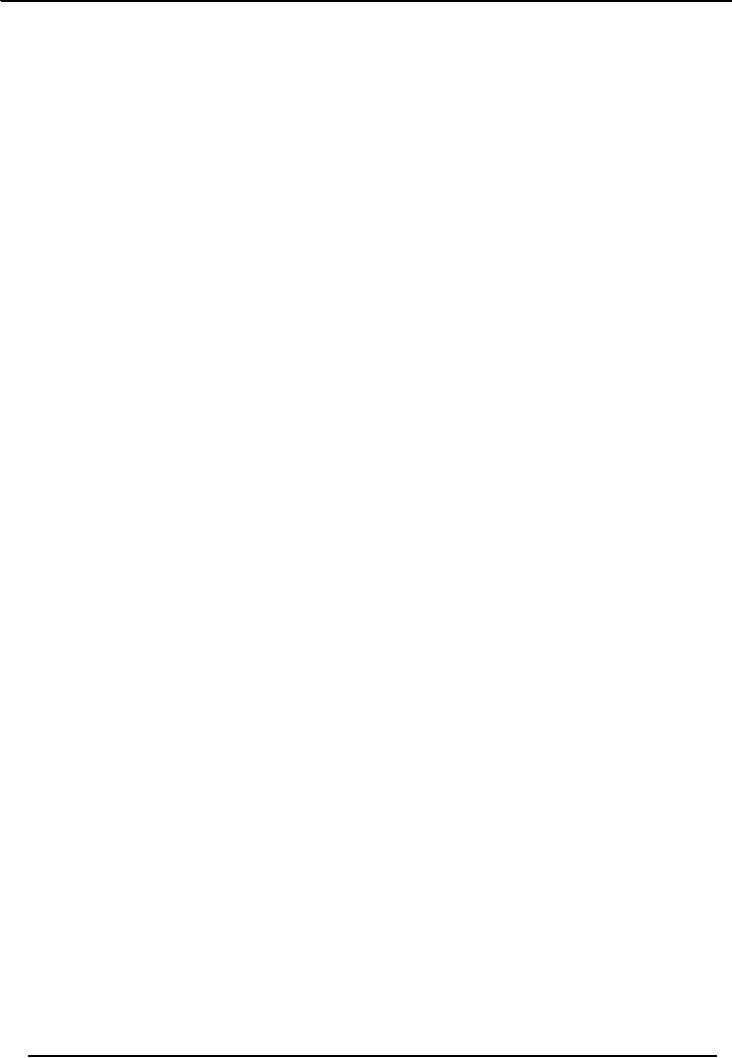
Feature
and Column Writing MCM 514
VU
5.
Don't interrupt if the answer is
not going the way you
want it, unless you
don't have time and
must
guide
it quickly to a conclusion.
6.
Assume nothing. [For instance: how a
name is spelled.]
Never
be ashamed of saying, "I don't
understand, or "What does that mean?" or
"Put it in layman's
language,
please." Neophytes are often so
scared of looking stupid
that they don't pursue
matters as far as
they
should. But to ask is to
learn, and to help your
readers learn. To me, the
only stupid question is
the
unasked
question.
However,
it is also said there is nothing
[during the interview] that
can be done by the book--nothing--
except
perhaps ask the really
"hairy" question at the end.
People,
whether they know it or not,
can tell an awful lot
from your body English, as
one can tell from
theirs
and from their facial
expressions. All reporters have to do this.
It's not technique so much
as
instinct.
All of this is based on gut
feeling. There are ways of
telling when a person's lying; the
brief
hesitations,
the people who are loath to
make eye contact. All these are
clues.
The
intensity of the questioning will
vary with the writer. For
example, who has flexible
deadlines, likes
to
take more time with
interviews. He initially spends
perhaps an hour with an
interviewee, then builds
to
longer
sessions. One tries to hang
out a lot, with all types of
subjects, sometimes not even
taking notes.
One
always works from the
less significant to the more significant
questions, until you know
what you
want
to ask. You may use the time
to ask and re-ask questions,
listening for nuances and
speech patterns.
Brief
points
�
Be
there in-time
�
Again
introduce yourself clearly,
may give visiting
card
�
If the
interviewee asks you for
drinks, tell him by
remaining within
limits
�
Be
friendly and
courteous
�
Congratulate
or condole if there is anything of the
sort
�
Writer--tell
him that you liked
his book
�
Make
him feel what he says is
hugely important
�
Try to
impart an impression that you
are interested in knowing what he
has to say
�
Breaking
ice yourself might ensue
problems
�
Avoid
interrupting the interviewee
�
Enable
him to do most of the
talking
�
Keep
him going smoothly but
not permitting to wander
away
�
Digressing
from the topic, follow with
interesting questions
�
Observe
facial impressions, mannerism and
gestures
�
Interested
in answering, getting perturbed or
happy
�
Vice-versa--you
are also being observed, no
cracking fingers, mobile switched
off or on silent--
ever
picking unless emergency
�
Take
plenty of notes in abbreviated
longhand, but not burying
yourself
�
Be
sure you have exhausted all
questions
�
Ask if
the interviewee wanted to say something
else
�
Exhaust
all questions before finishing
off
�
Listen
carefully
�
Identify
between important and unimportant
details
�
Understand
if there were any ambiguities
�
Spellings
of all names
�
Exhaust
all questions before finishing
off
�
Thanks
the person
�
Observe
requests if any
31
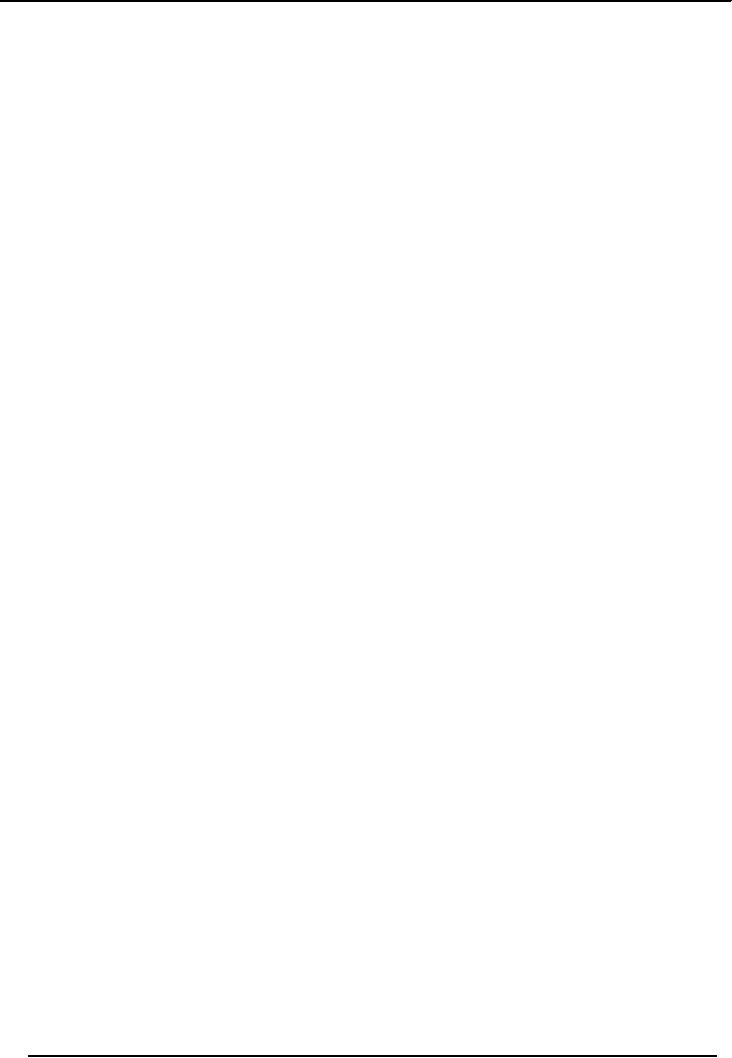
Feature
and Column Writing MCM 514
VU
Attribution
guidelines
During
practically every interview,
you can expect the interviewee to
say at least once, "Hey,
don't put
that
in the story" or, "I'll answer
your question if you agree
not to use the information in the
story." When
that
happens, you're being
confronted with one of the most
vexing problems facing the writer--what
to
do
about the "off-the-record"
request.
When
an off-the-record request is made
(whether it's in regard to something said
or as yet unsaid),
you
have
three choices: You can agree to keep the
remark secret, you can
absolutely deny the subject's
request,
or you can bargain to use
some or all of the information in
your story. Off-the-record
comments
and
information withheld by the subject are
of little use, so most
writers refuse requests to
keep
information
secret and attempt to bargain.
To
understand how you can
change the subject's off-the-record
request into a usable
quotation, it is
helpful
to know the etiquette under
which most newspaper and
magazine writers operate. First,
any
comment
made during an interview is
on-the-record unless the comment is
granted off-the-record status
by
the writer. Professional etiquette requires
you to keep your word only
if you've actually given it.
On
the
other hand, you are required
to keep your word if you
agree not to print an
interviewee's information
prior
to being told that
information.
Successful
bargaining requires understanding how
quotations can be restricted. Typically,
quotation
agreements
can be divided into five
categories.
The
first category is for-direct-quotation. Here,
whatever the subject tells you
can be used as a
direct
quote,
a partial quote or an indirect
quote. Here's an example of a
direct quotation.
Remarks
made during most personal and
telephone interviews, of course,
are always on-the-record
and
for-direct-quotation,
unless the subject advises you
otherwise prior to making the
remark.
Proceeding
along a continuum of progressively
less acceptable restrictions, the
next category is
not-for-
direct-quotation. Here,
you can identify the source
and repeat the quote, but
not within quotation
marks.
The
purpose of this technique is
largely to allow the source to
claim having been misquoted if he or
she is
in
hot water after the
interview appears. Even
though politicians enjoy
using this approach, you
should
avoid
it because it casts a shadow on
your credibility should the subject
deny having made the
statement?
Not-for-attribution
comes
next. The lack of
attribution forces you to
connect a quote to a
generalized
source.
This
kind of attribution--sometimes called
background attribution--obviously has
less credibility than
a
direct
quotation or even a not-for-direct-quotation
statement.
Deep
background often refers
to information given to a writer on the
basis that it not be
attributed to the
source
in any way. Usually the
writer can get another source to
corroborate the background
information
and
then can attribute that
information to the new source. Deep
background is frequently used in
news
analysis
articles.
The
last, and worst, category is, of
course, off-the-record,
where
you promise not to reveal
either the
information
or the source.
Much
of this is a tempest in a teapot because
often interviewees want to
restrict information in which
you
have
little interest: They pledge
you to secrecy and then tell
you something that is irrelevant to the
story.
Succinctly,
the plan is to assume anything
you're told in an interview is
for-direct-quotation unless
you
agree
to an exception. If you agree to an
exception, try to move the
request along the continuum
from off-
the-record
to at least not-for-direct-quotation or at
worst not-for-attribution. Agreeing to
hear important
information
on an off-the-record basis is a waste of
your time.
In
addition to off-the-record requests,
some subjects demand to see
their quotations or even the
entire
story
as a condition of the interview. Their
requests are usually
rejected.
Magazine
writers and editors sometimes
verify quotations by reading
key selections to a source
by
telephone.
Most newspaper feature
writers refuse all such
requests. A lot of people
ask to see the piece
and
you always have to say,
`No.'
32
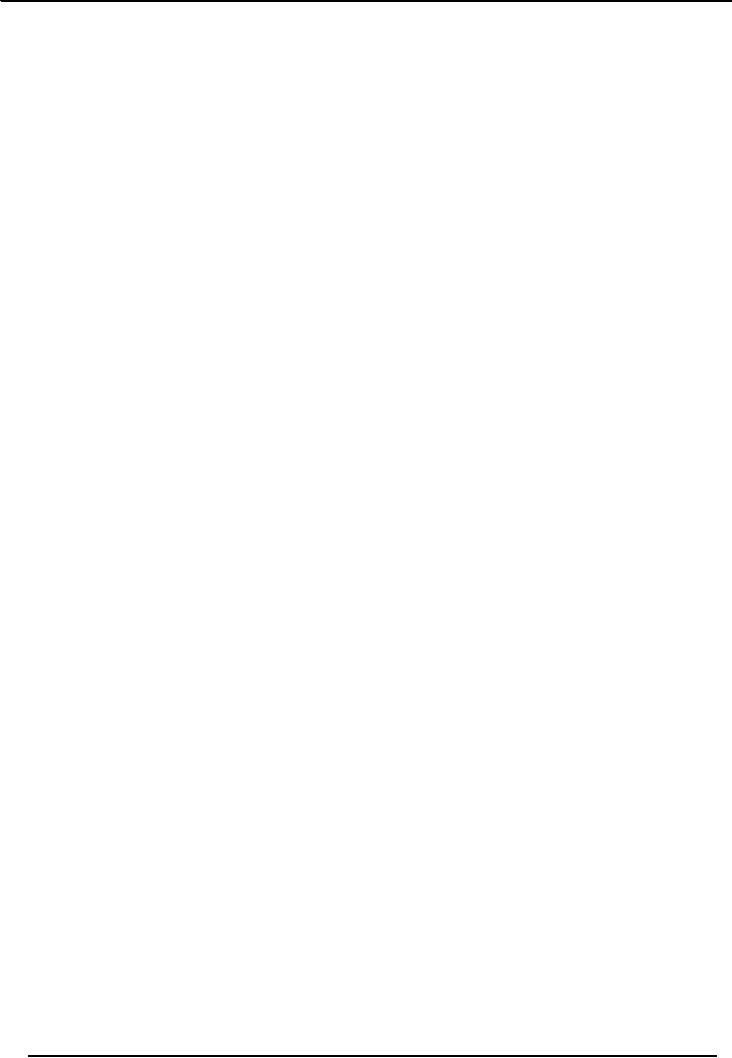
Feature
and Column Writing MCM 514
VU
Gathering
material
Note-taking
Tips.
Researchers
say that even if you're a
careful listener, you will
miss 50 percent of what a speaker--in
this
case,
an interviewee--has to say. And if you
don't record that information
quickly, you will lose
50
percent
of what you did hear.
For that reason, note
taking is critical unless
you routinely depend on
tape
recorders.
First,
use the correct tools. Writers have
found that taking notes on
standard paper slows down
writing.
Use
a reporter's notepad, which typically is
about four inches wide by
eight inches long.
Most
newspaper and magazine writers
don't know shorthand. However,
most writers do use some
form of
self-taught
shorthand, which is another tool. At its
simplest, that shorthand involves using
numbers for
words
("4" instead of "four") and dropping
articles (such as "the") and other
non-essential words. Still,
note
taking in this manner is an
inexact art and depends on the
writer's getting to a terminal or
computer
as
quickly as possible to reconstruct the language of the
interviewee. So--assuming you're
not using a
tape
recorder and you don't know
true shorthand--don't try to
take down every word.
Instead, rely on
good
notes for direct and partial
quotations and on your memory to
reconstruct the gist of what the
subject
said
in indirect quotation.
An
especially fast-talking interviewee
may cause you to fall
far behind in note taking,
despite your
reporter's
notepad, self-taught shorthand and excellent
memory. If that happens, consider
asking your
speeding
subject to slow down.
Finally,
be as inconspicuous as possible about your
note taking. Keep your
notes out of the line of
sight of
the
interviewee. In fact, avoid
letting the subject even see when
you've stopped writing. This
gives you
the
option of ignoring inane
comments while taking copious
notes of important
ones.
Tape
recorder techniques.
To
tape or not to tape, that is the
question!
Most
newspaper reporters facing daily
deadlines seldom use recorders. Replaying
and transcribing
material
takes too much time,
they say.
On
the other hand, magazine
writers--especially freelance writers--use
tape recorders frequently.
So
does
newspaper feature writers
who don't face short
deadlines?
While
there is disagreement among journalists about the
value of recorders, all
agree that if you use a
tape
recorder,
you should use a good
one.
The
ideal machine, which should be
small so that it won't distract the
interviewee, ought to have a
built-in
microphone
with an automatic gain
control. The built-in mike
will lessen the obtrusiveness of
the
machine;
the gain control will
automatically adjust the recording level
for varying conditions.
Recording
should
be indicated by a tiny light so
you can check whether the
machine is working properly. All
are
common
features.
The
machine also should have a tape counter
and an audible forward cue so
that you can locate
specific
segments
of the tape later. The counter
reading can be noted during
the interview so you can
later find the
general
location of important quotations, and the
cue will allow you to
play the tape back at faster
than
normal
speed to pinpoint those
quotations quickly. These
are common features, too.
An
end-of-tape warning signal to
let you know when
you're out of tape, and an auto-reverse
capability so
that
the recorder will automatically record the
second side of the tape, are
important but less
common
features.
So is a voice-activated recording system,
which means the machine will record
only when
someone
is talking, thus saying
tape.
Even
with all of this technology,
it's a good idea to take
notes as though the recorder did
not exist. This
will
protect you in case the recorder
fails and will also provide
a table of contents for the
tape.
Secondly,
a tape recorder frees you to
really listen to the other
person and gauge interaction
with them.
You
can look at them. They can
look at you. They're not
looking at the top of your
head. That is
disconcerting.
The tape recorder gives the
interviewer a chance to really
respond to what the
interviewee
is
saying, to think about it.
Plus the fact that when
you get back and have to listen to all of
this again, it's
really
very helpful because you
hear things you didn't
hear at first, and inflections,
pauses.
33
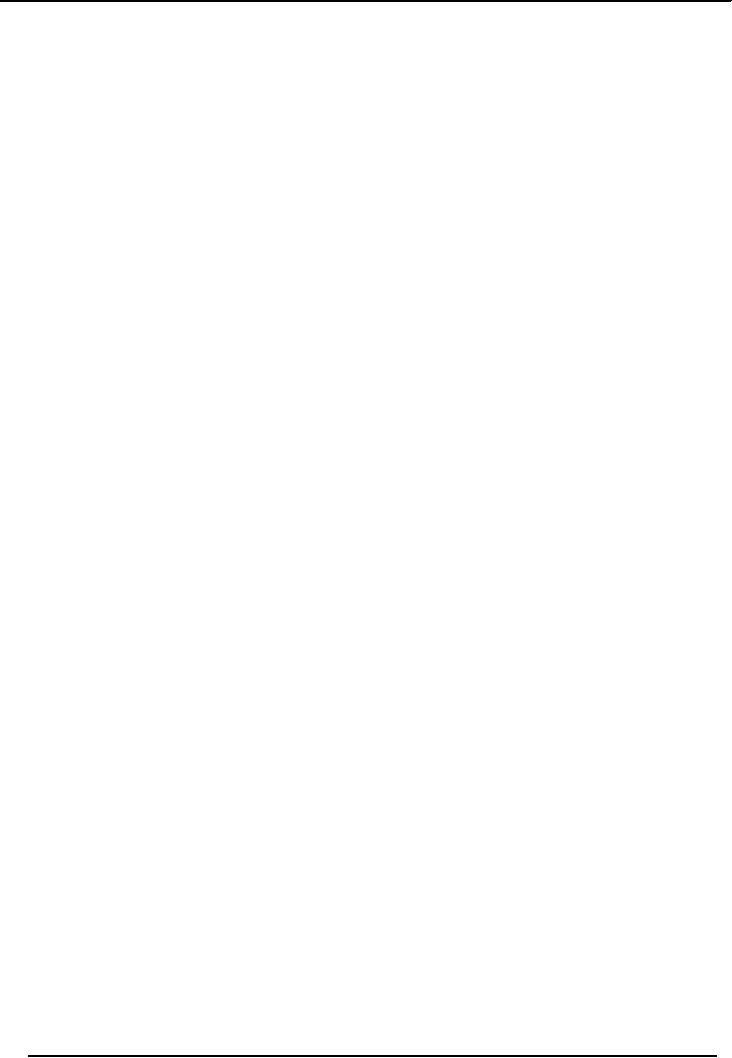
Feature
and Column Writing MCM 514
VU
Some
reporters argue against using tape
recorders. They can
malfunction, tapes take time
to transcribe,
and
taping encourages laziness on the
part of the reporter. All of these
points are worth
considering. But
tape
recorders can be tested
right before and during an
interview.
Closing
the session
If
you've done a good job
interviewing your subject, closing the
session may be difficult
because the
subject,
who probably has enjoyed the
experience immensely, will want to
prolong the interview. You
must
persuade him or her that the
time has come to end the
interview.
The
best way to close the
interview is to explain that the
time you've asked for
has long been up and
you
have
another appointment. You should also add
that you may have other
questions (and the chances
are
good
that, indeed, you will) and
you would like to be able to
telephone. The interviewee
will usually be
willing
to continue the relationship and will
probably insist that you
call if you have the
slightest
question.
With that, you should
smile, thank the interviewee and
leave.
Writing
the interview
Feature
and magazine articles usually
require description. Description requires
keen observation, the third
component
of reporting. Sometimes keen observation
requires participation.
There
are numerous approaches to
describing people, places and
events. What works in
describing people
is
usually also effective for
describing places and
events.
Write
immediately after, otherwise
you may lose information
after determine the kind of
interview you
had
conducted. Hence you must include
only the pertinent content, by
avoiding the obvious and the
stereotype
information. One must use
your originality and subject to determine
the best order of
information.
Begin
with an appropriated lead,
which must interest your
reader.
Bridge
the gaps carefully by re-reading
whatever you have
written.
34
Table of Contents:
- IMPORTANCE OF LANGUAGE:Feature writing, Explanation of the definition
- SOURCES OF MATERIAL:Commemorations, Science and Technology
- INTERNET USAGE IN FEATURE WRITING:Be very careful, Website checklist
- WHAT MAKES A GOOD FEATURE?:Meeting demands of readers
- DEMANDS OF A FEATURE:Entertainment and Interest, Both sides of picture
- CONDUCTING AND WRITING OF INTERVIEWS:Kinds of interviews
- WRITING NOVELTY INTROS:Punch or astonisher intros, Direct quotation intros
- STRUCTURE OF FEATURES:Intro or Lead, Transition, Body
- SELECTION OF PICTURES, ILLUSTRATIONS AND MAPS:Sources
- FEATURES AND EDITORIAL POLICY:Slanting or angling feature
- HUMAN INTEREST AND FEATURE WRITING:Obtaining facts, Knowing how to write
- NEWSPAPER FEATURE STORY:The Business Story, The Medical Story
- THE NEWSPAPER FEATURE STORY IDEA:Conflict, Human interest
- MAGAZINE FEATURE VERSUS DAILIES:Feature versus Editorial, An overview
- WRITING THE SPECIALISED FEATURE STORY:The Deadline Feature Sidebar
- MODERN FEATURE AND ITS TREATMENT:Readers’ constraints
- MODERN FEATURE WRITING TECHNIQUE:The Blundell Technique
- ADVICE TO FEATURE WRITERS:A guide to better writing, Love Writing
- COLUMN WRITING:Definition, Various definitions, Why most powerful?
- COLUMN WRITING IN MODERN AGE:Diversity of thought, Individuality
- ENGLISH AND URDU COLUMNISTS:More of anecdotal, Letting readers know
- TYPES OF COLUMNS:Reporting-in-Depth Columns, Gossip Columns
- OBJECTIVES AND IMPORTANCE OF COLUMNS:Friendly atmosphere, Analysis
- WHAT ARE THE ESSENTIALS AND BASIC POINTS THAT GO IN TO THE FORMING OF A COLUMN?
- STYLE:General and a specialised writing, How can a columnist improve it?
- GENERAL STYLE OF THE COLUMN:Unified Style, Anecdotal Style, Departmental Style
- STRUCTURE OF A COLUMN:Intro or lead, Main body, Conclusion
- COLUMN WRITING TIPS:Write with conviction, Purpose, Content
- SELECTION OF A TOPIC:Close to your heart, Things keeping in Queue
- QUALITIES OF A COLUMN WRITER:Personal, Professional, Highly Educated
- WHAT MUST BE PRACTISED BY A COLUMNIST?:Pleasantness, Fluency
- SOURCES OF MATERIAL OF COLUMNS:Constant factors, Interview
- USEFUL WRITING DEVICES:Be specific, Use Characterisation, Describe scenes
- COMMON WRITING PROBLEMS:Eliminate clichés, Don’t misuse words
- WRITING THE COLUMN:Certain thumb rules, After writing the column
- ARTICLE WRITING:Introduction, Definition, Contents, Main Segments, Main body
- HOW TO WRITE AN ARTICLE?:It is more efficient, It is more believable
- TYPES AND SUBJECTS OF ARTICLE:Interview articles, Utility articles
- FIVE COMMANDMENTS, NO PROFESSIONAL FORGETS:Use Key Words
- ARTICLES WRITING MISTAKES:Plagiarising or 'buying articles, Rambling
- WRITING THE ARTICLE:Various parts of article, The topic sentence
- What to do when you have written the article?:Writing the first draft
- TEN STANDARD ARTICLE FORMATS:The informative articles
- LEGAL AND ETHICAL CONSIDERATIONS FOR WRITERS:Libel, Doctoring Quotes
- REVISION:Importance of language, Feature writing, Sources of material